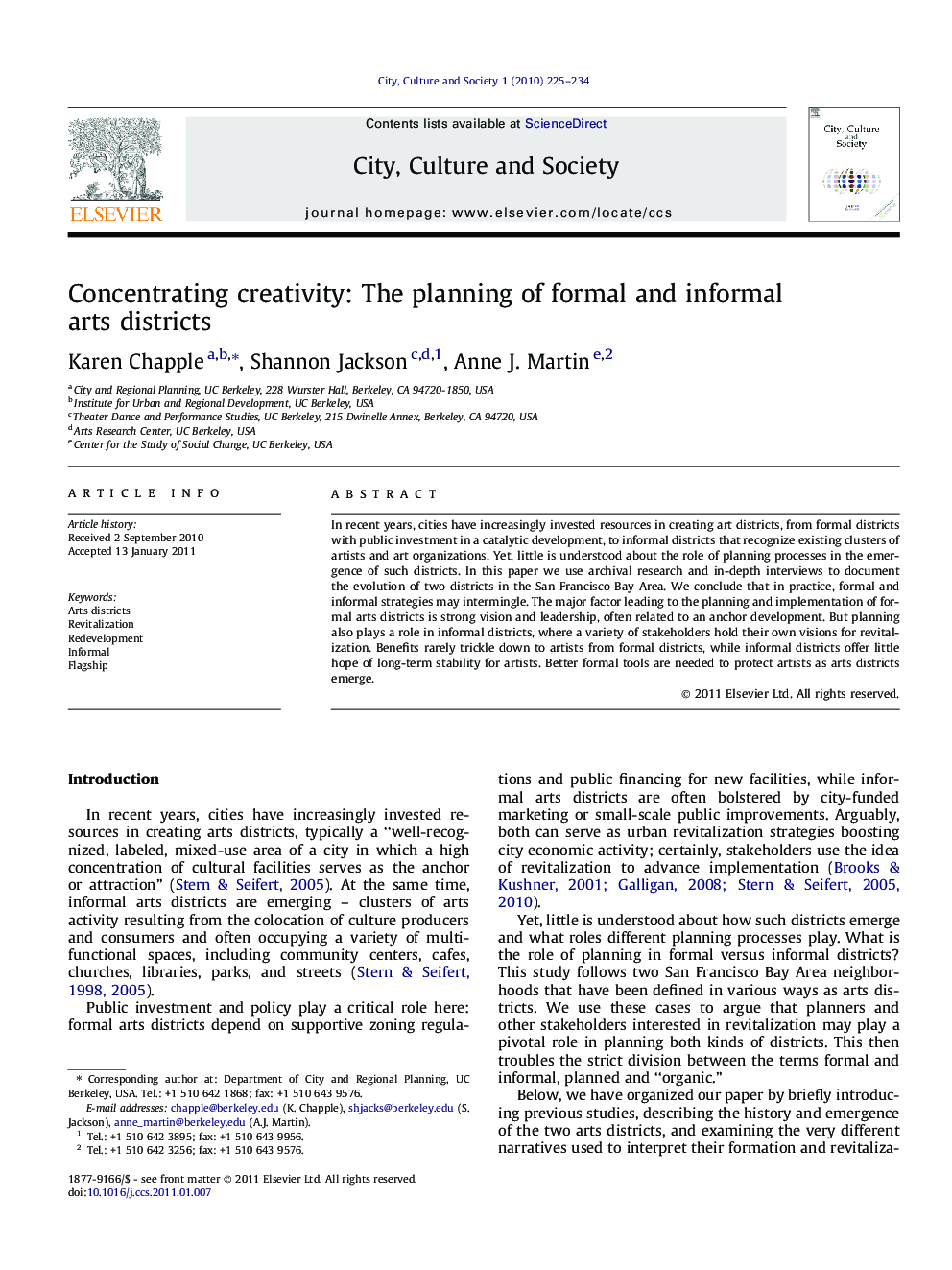| Article ID | Journal | Published Year | Pages | File Type |
|---|---|---|---|---|
| 5048445 | City, Culture and Society | 2010 | 10 Pages |
In recent years, cities have increasingly invested resources in creating art districts, from formal districts with public investment in a catalytic development, to informal districts that recognize existing clusters of artists and art organizations. Yet, little is understood about the role of planning processes in the emergence of such districts. In this paper we use archival research and in-depth interviews to document the evolution of two districts in the San Francisco Bay Area. We conclude that in practice, formal and informal strategies may intermingle. The major factor leading to the planning and implementation of formal arts districts is strong vision and leadership, often related to an anchor development. But planning also plays a role in informal districts, where a variety of stakeholders hold their own visions for revitalization. Benefits rarely trickle down to artists from formal districts, while informal districts offer little hope of long-term stability for artists. Better formal tools are needed to protect artists as arts districts emerge.
Research highlights⺠Archival research and interviews document two San Francisco Bay Area arts districts. ⺠Formal and informal strategies intermingle. ⺠Leadership catalyzes formal districts, but planning helps shape informal districts. ⺠Formal districts fail to benefit local artists while informal rarely stabilize. ⺠Better formal tools are needed to protect artists as arts districts emerge.
